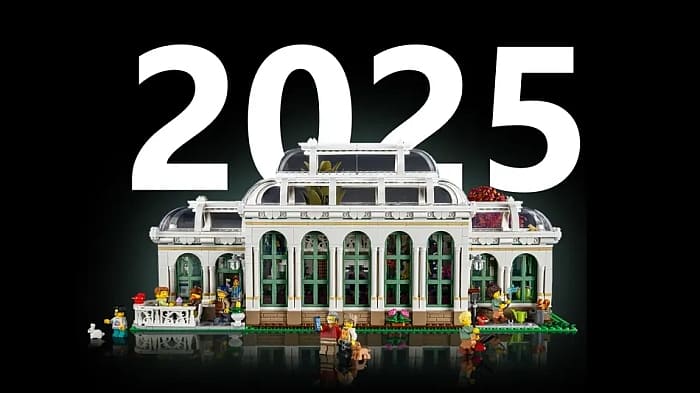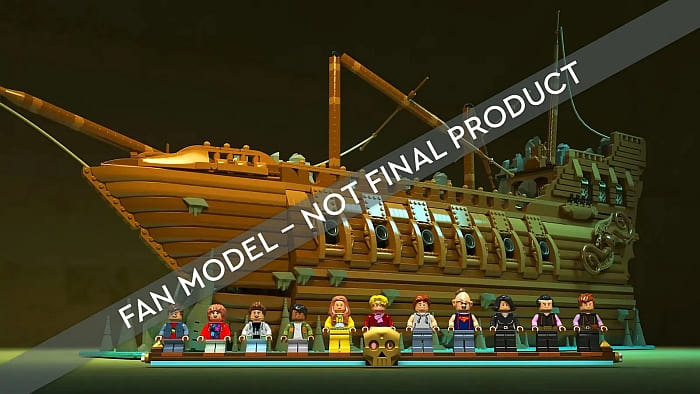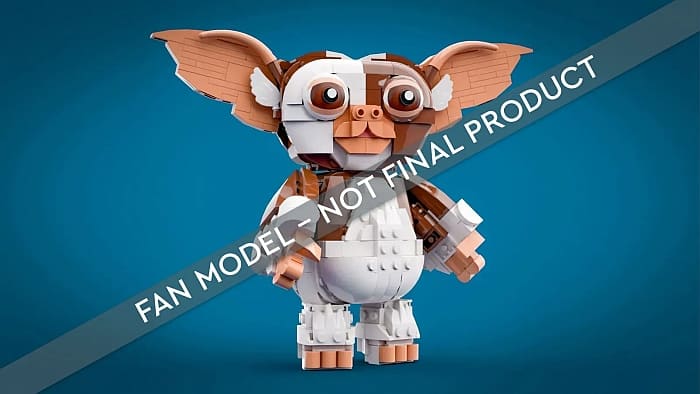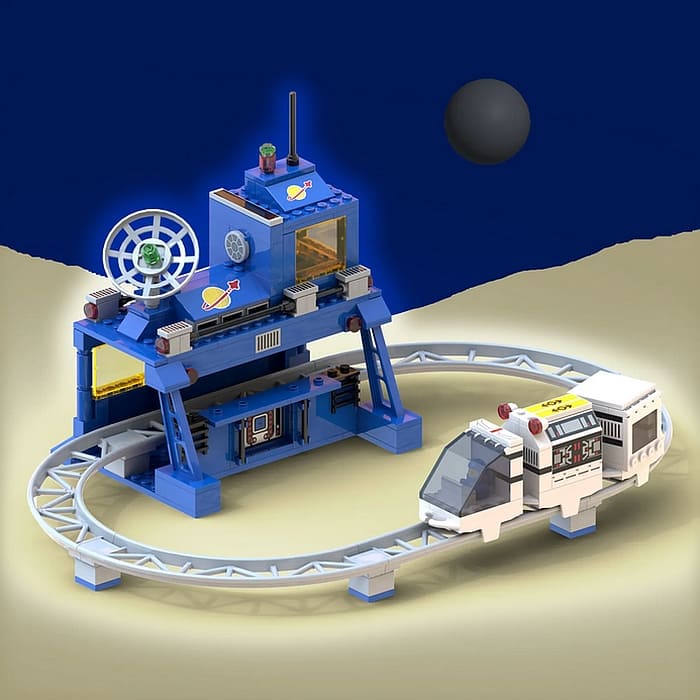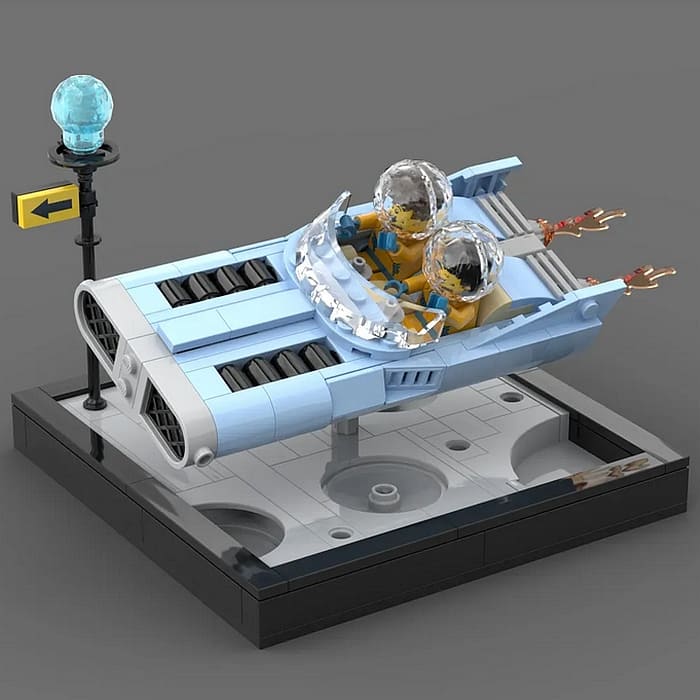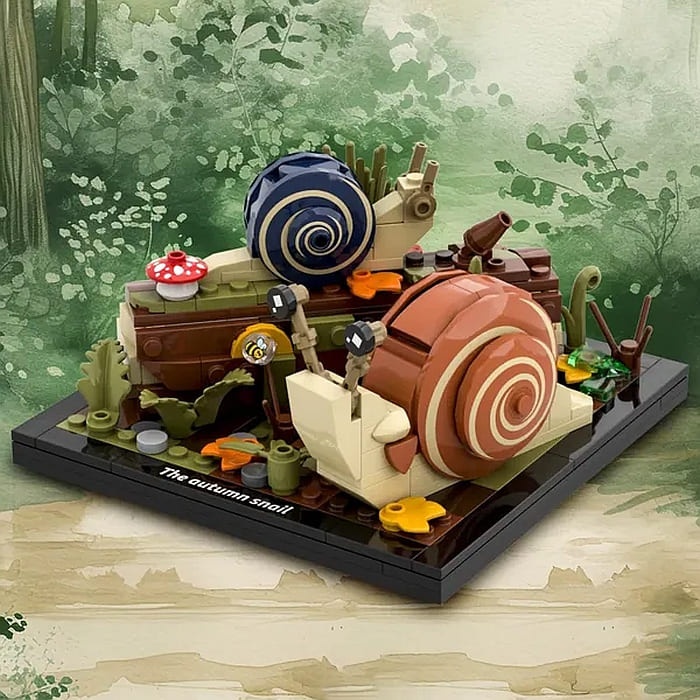The first day of the year is always big for LEGO fans, as this is when LEGO releases the first batch of new sets! This year, you can select from over 140 new sets from every theme! Take a look below.

2025 LEGO ANIMAL CROSSING SETS AVAILABLE NOW: Three new sets are available in this theme, all with cute characters that remind old-time LEGO fans of LEGO Fabuland! You can find them at the LEGO Animal Crossing section of the Online LEGO Shop.
- #77053 LEGO Animal Crossing Stargazing with Celeste – Price: $9.99
- #77054 LEGO Leif’s Caravan & Garden Shop – Price: $29.99
- #77055 LEGO Animal Crossing Able Sisters Clothing Shop – Price: $39.99
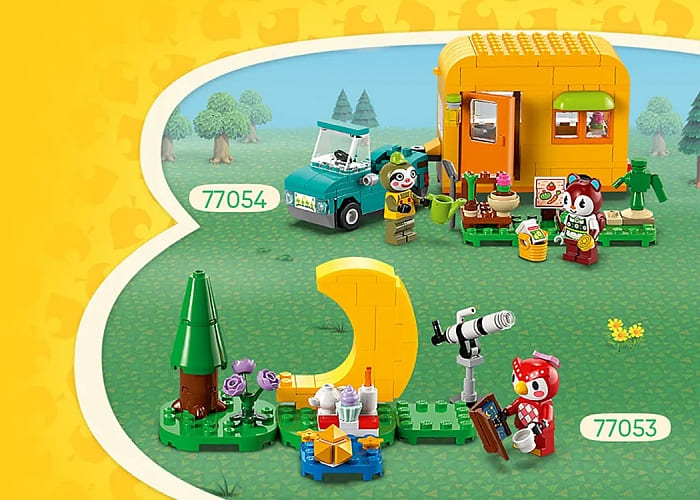
2025 LEGO ART SET AVAILABLE NOW: This collection only has one new set, featuring an iconic sculpture from Robert Indiana. The #31214 LEGO Art LOVE is $79.99 and is available at the LEGO Art section of the Online LEGO Shop.
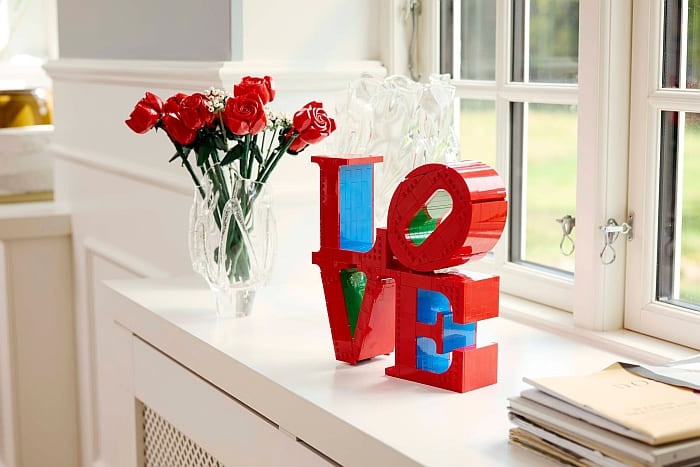
2025 LEGO BOTANICAL SETS AVAILABLE NOW: Three new sets are available in this beautiful collection at the LEGO Botanical section of the Online LEGO Shop.
- #10342 LEGO Botanical Pretty Pink Flower Bouquet – Price: $59.99
- #10343 LEGO Botanical Mini Orchid – Price: $29.99
- #10344 LEGO Botanical Lucky Bamboo – Price: $29.99


2025 LEGO BRICKHEADZ AVAILABLE NOW: Only one set, but with two cute characters! The #40793 LEGO BrickHeadz Tom & Jerry Figures are $14.99 and available at the LEGO BrickHeadz section of the Online LEGO Shop.
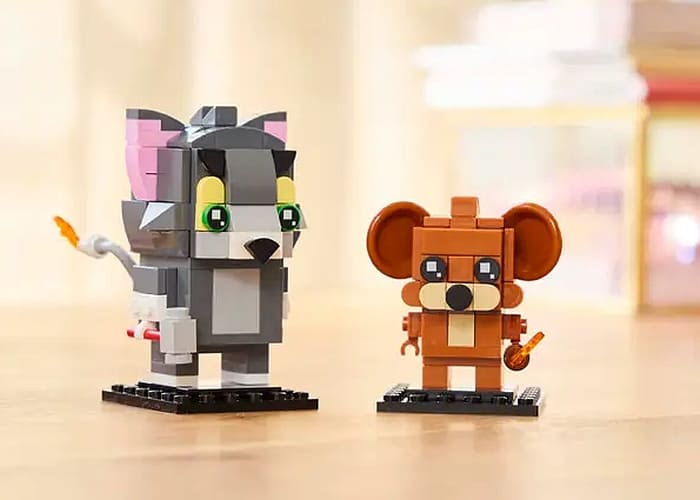
2025 LEGO CITY SETS AVAILABLE NOW: There are tons of new sets in LEGO City featuring race cars, one more LEGO City Space set, regular city vehicles, and more at the LEGO City section of the Online LEGO Shop.
- #60442 LEGO City F1 Driver with McLaren Race Car – Price: $12.99
- #60443 LEGO City F1 Pit Stop & Pit Crew with Ferrari Car – Price: $29.99
- #60444 LEGO F1 Garage & Mercedes-AMG & Alpine Cars – Price: $79.99
- #60445 LEGO City F1 Truck with RB20 & AMR24 F1 Cars – Price: $99.99
- #60446 LEGO City Galactic Spaceship – Price: $79.99
- #60447 LEGO City Off-Road Mountain Truck – Price: $19.99
- #60448 LEGO City Sports Car – Price: $9.99
- #60450 LEGO City Wheel Loader – Price: $14.99
- #60451 LEGO City Emergency Ambulance – Price: $19.99
- #60452 LEGO City Donut Truck – Price: $19.99
- #60453 LEGO City Lifeguard Truck – Price: $24.99
- #60454 LEGO City Holiday Camper Van – Price: $29.99
- #60458 LEGO City Pizza vs. Fire Truck – Price: $9.99
- #60459 LEGO City Airplane vs. Hospital Bed – Price: $9.99
- #60460 LEGO City No Limits: Race Car Ramp – Price: $49.99
- #60461 LEGO City Tractor with Trailer – Price: $19.99
- #60462 LEGO Helicopter, Fire Truck & Submarine Remix – Price: $59.99
- #60463 LEGO City Fire Truck – Price: $19.99
- #60464 LEGO F1 Williams Racing & Haas F1 Race Cars – Price: $19.99
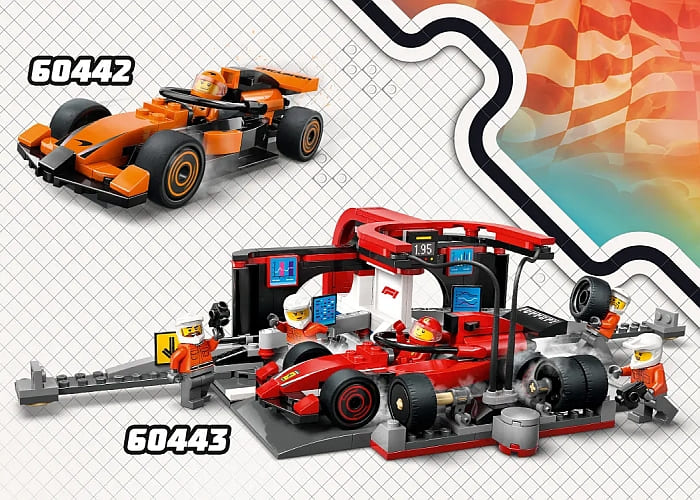
2025 LEGO CREATOR 3-IN-1 SETS AVAILABLE NOW: A good variety of sets here, each with alternate instructions for three different models. Available at the LEGO Creator section of the Online LEGO Shop.
- #31159 LEGO Creator Surprising Spider – Price: $12.99
- #31160 LEGO Creator Race Plane – Price: $14.99
- #31161 LEGO Creator Medieval Dragon – Price: $59.99
- #31162 LEGO Creator Cute Bunny – Price: $19.99
- #31163 LEGO Creator Playful Cat – Price: $24.99
- #31164 LEGO Creator Space Robot – Price: $24.99
- #31165 LEGO Creator Panda Family – Price: $36.99
- #31169 LEGO Creator Typewriter with Flowers – Price: $29.99
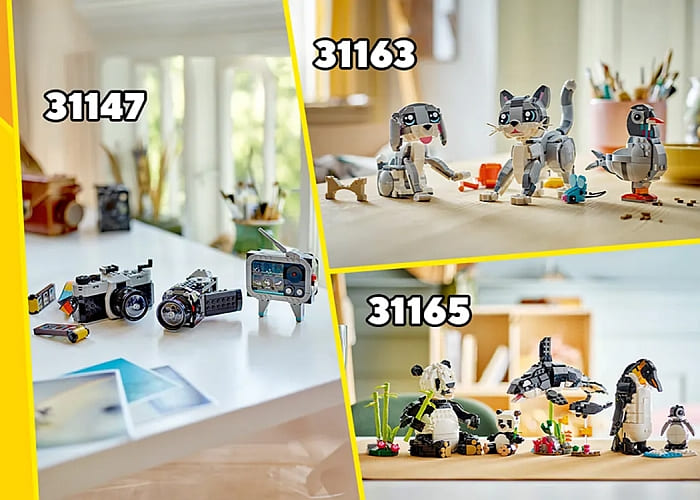
2025 LEGO DC SUPER HEROES SETS AVAILABLE NOW: These sets are great for younger builders Check them out at the LEGO DC Super Heroes section of the Online LEGO Shop.
- #76301 LEGO Batman & Batmobile vs. Mr. Freeze – Price: $19.99
- #76302 LEGO Superman Mech vs. Lex Luthor – Price: $14.99
- #76303 LEGO Batman Tumbler vs. Two-Face & The Joker – Price: $59.99
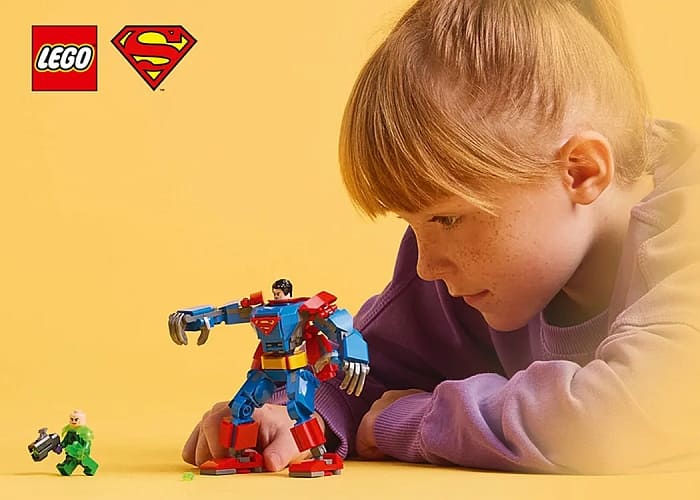
2025 LEGO DISNEY SETS AVAILABLE NOW: Several new LEGO Disney sets are now available featuring Frozen, Moana, Encanto, Ariel, and Cinderella. Available at the LEGO Disney section of the Online LEGO Shop.
- #43256 LEGO Disney Anna’s Sleigh Adventure – Price: $39.99
- #43259 LEGO Disney Twirling Ariel – Price: $9.99
- #43260 LEGO Disney Moana’s Island Fun – Price: $19.99
- #43261 LEGO Disney Encanto Mini House – Price: $19.99
- #43265 LEGO Disney Arendelle Frozen Castle – Price: $29.99
- #43270 LEGO Disney Moana’s Adventure Canoe – Price: $59.99
- #43275 LEGO Disney Cinderella’s Castle & Horse Carriage – Price: $79.99
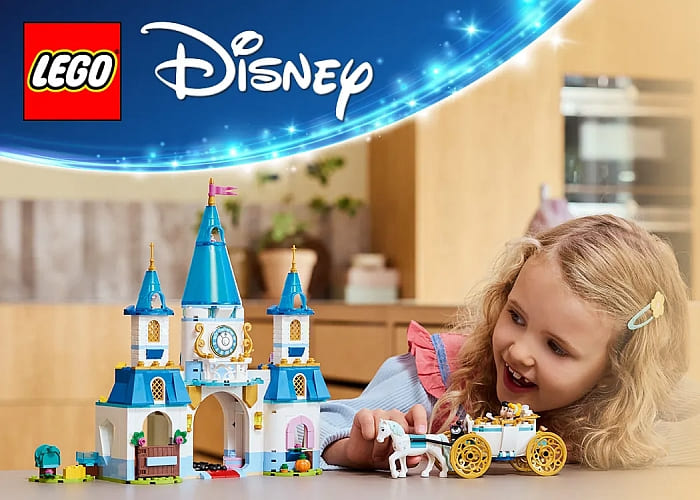
2025 LEGO DREAMZZZ SETS AVAILABLE NOW: This interesting theme is somewhat similar to LEGO Ninjago and LEGO Monkie Kid, with creative vehicles, mechs, and more. Available at the LEGO DreamZzz section of the Online LEGO Shop.
- #71487 LEGO DreamZzz Z-Blob’s Robot and Vehicle Adventures: $9.99
- #71488 LEGO Bunchu’s Creative Animal Adventures – Price: $9.99
- #71489 LEGO DreamZzz Cooper’s Gaming Controller Jet – Price: $19.99
- #71490 LEGO Izzie and Bunchurro the Gaming Bunny – Price: $19.99
- #71491 LEGO Mateo and the Z-Blob Action Race Car – Price: $49.99
- #71497 LEGO Cooper’s Tiger Mech and Zero’s Hot Rod Car – Price: $99.99
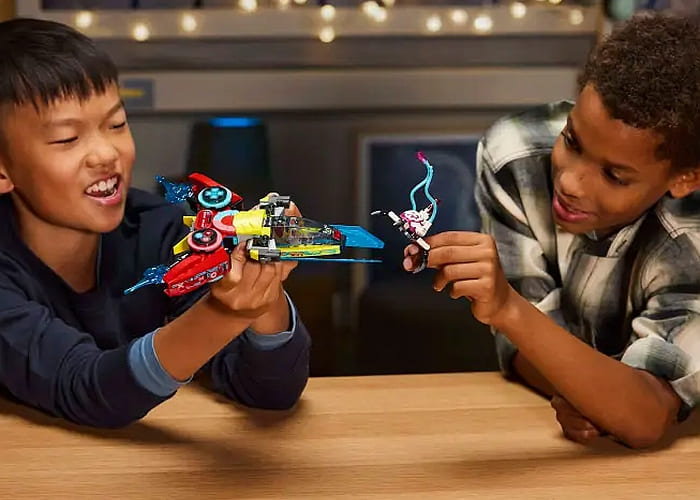
2025 LEGO FRIENDS SETS AVAILABLE NOW: This is another theme with a whole bunch of new sets, including some really cool ones! Take a look at that Beekeeper’s House! Available at the LEGO Friends section of the Online LEGO Shop.
- #42640 LEGO Friends Guinea Pig Playground – Price: $9.99
- #42641 LEGO Friends Surfing Dogs and Scooter Adventure – Price: $14.99
- #42643 LEGO Friends Cotton Candy Stand and Scooter – Price: $9.99
- #42644 LEGO Friends Heartlake City Ice Cream Truck – Price: $19.99
- #42645 LEGO Friends Aliya’s Baby Sister’s Playroom – Price: $17.99
- #42646 LEGO Friends Autumn’s Room- Price: $19.99
- #42647 LEGO Friends Paisley’s Room – Price: $19.99
- #42649 LEGO Friends Heartlake City Candy Store – Price: $29.99
- #42650 LEGO Friends Pet Accessories Shop – Price: $39.99
- #42651 LEGO Friends Horse and Pet Vet Clinic – Price: $49.99
- #42652 LEGO Friends Friendship Tree House Hangout – Price: $69.99
- #42655 LEGO Friends Restaurant and Cooking School – Price: $79.99
- #42656 LEGO Friends Heartlake City Airport and Airplane – Price: $99.99
- #42662 LEGO Friends Hair Salon and Accessories Store – Price: $44.99
- #42663 LEGO Friends Friendship Camper Van Adventure – Price: $59.99
- #42669 LEGO Beekeepers’ House and Flower Garden – Price: $89.99
- #42670 LEGO Heartlake City Apartments and Stores – Price: $169.99
- #42672 LEGO Friends Creative Beach and Travel Suitcase – Price: $29.99
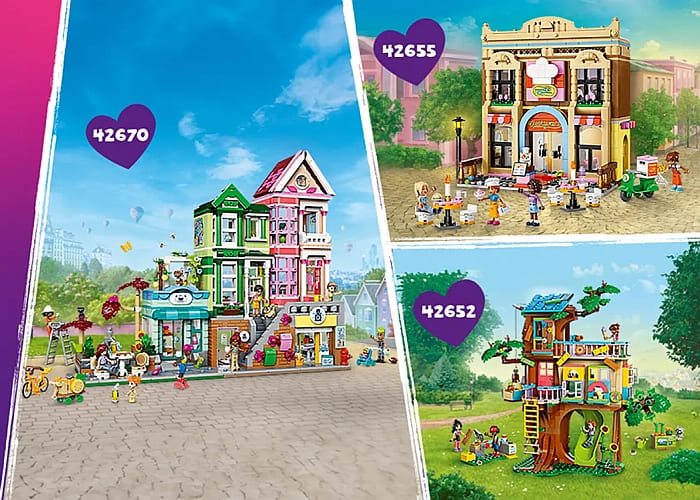
2025 LEGO HARRY POTTER SETS AVAILABLE NOW: Harry Potter fans have more sets to add to their layout, and if you have limited space, take a look at the micro Diagon Alley! Available at the LEGO Harry Potter section of the Online LEGO Shop.
- #76441 LEGO Hogwarts Castle: The Dueling Club – Price: $24.99
- #76442 LEGO Harry Potter Hogwarts Castle: Charms Class – Price: $19.99
- #76443 LEGO Hagrid & Harry’s Motorcycle Ride – Price: $49.99
- #76444 LEGO Diagon Alley: Wizarding Shops – Price: $199.99
- #76447 LEGO Harry Potter Hogwarts Castle: Flying Lesson – Price: $79.99
- #76453 LEGO Harry Potter Malfoy Manor – Price: $149.99
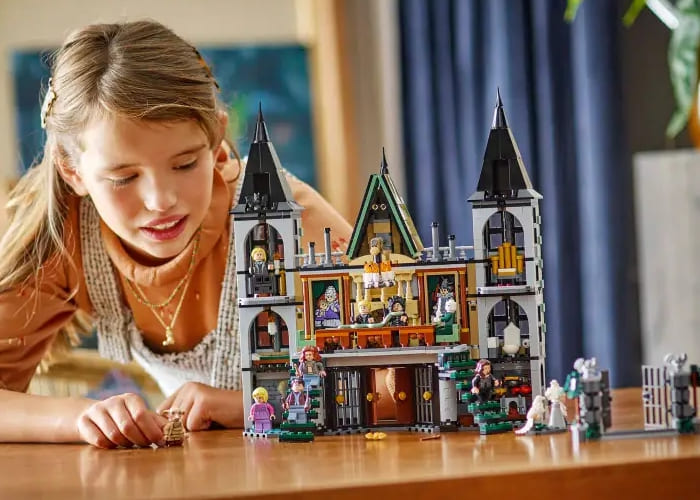
2025 LEGO ICONS SETS AVAILABLE NOW: The new LEGO Modular Building is already considered by many as the best in the collection! If you get the new set before January 7th, you will also get the #40757 LEGO Corner Kiosk free with your purchase. And LEGO Classic Space fans are getting an awesome remake of a Blacktron ship! You can find all the new sets at the LEGO Icons section of the Online LEGO Shop.
- #10350 LEGO Icons Tudor Corner – Price: $229.99
- #10355 LEGO Icons Blacktron Renegade – Price: $99.99
- #10359 LEGO Icons Fountain Garden – Price: $99.99
- #10363 LEGO Icons Leonardo da Vinci’s Flying Machine – Price: $54.99
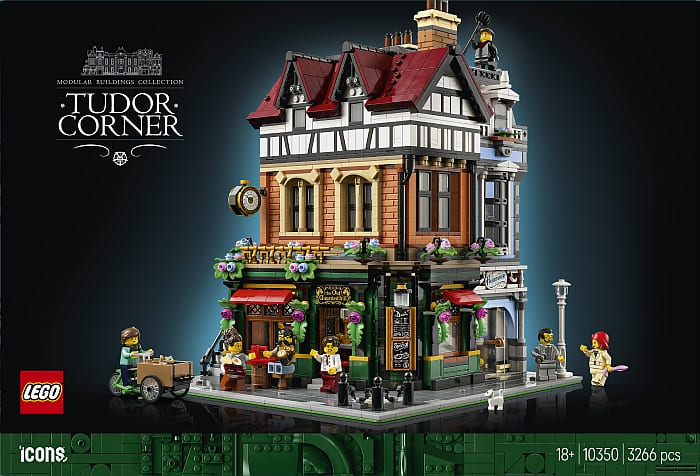
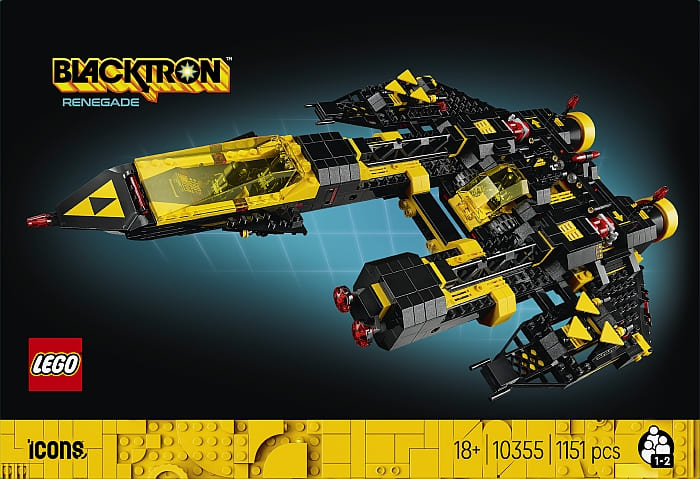
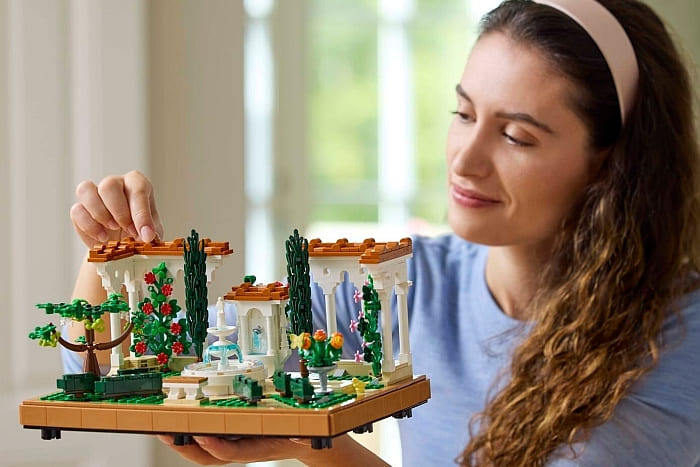
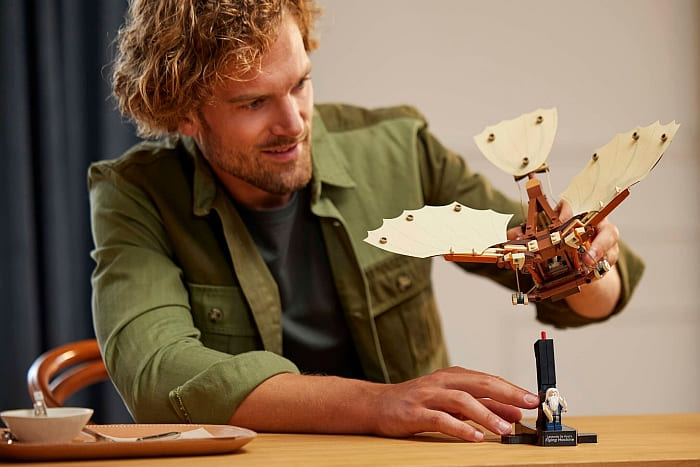
2025 LEGO JURASSIC WORLD SETS AVAILABLE NOW: Only two new sets for Jurassic World fans, featuring a skull and a buildable dino. Available at the LEGO Jurassic World section of the Online LEGO Shop.
- #76967 LEGO Jurassic World Little Eatie: T. Rex – Price: $24.99
- #76969 LEGO Dinosaur Fossils: Triceratops Skull – Price: $44.99
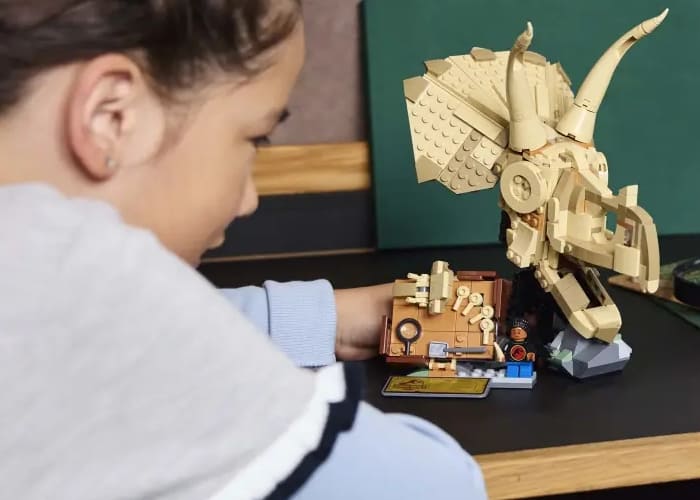
2025 LEGO MARVEL SETS AVAILABLE NOW: LEGO is offering a surprising number of new sets for Marvel fans, featuring Spider-Man, Iron Man, and more! Take a look at the LEGO Marvel section of the Online LEGO Shop.
- #11198 LEGO Spin and Electro Dinosaur Vehicle Chase – Price: $19.99
- #11199 LEGO Team Spidey Dino Crawler Rescue – Price: $34.99
- #11200 LEGO Spidey and Gobby’s Raptor Battle – Price: $59.99
- #76307 LEGO Iron Man vs. Ultron – Price: $14.99
- #76308 LEGO Spider-Man vs. Anti-Venom – Price: $14.99
- #76309 LEGO Spider-Man vs. Venom Muscle Car – Price: $29.99
- #76310 LEGO Iron Man Car & Black Panther vs. Red Hulk – Price: $34.99
- #76311 LEGO Spider-Verse: Miles Morales vs. The Spot – Price: $49.99
- #76313 LEGO MARVEL Logo – Price: $99.99
- #76314 LEGO Captain America: Civil War Battle – Price: $99.99
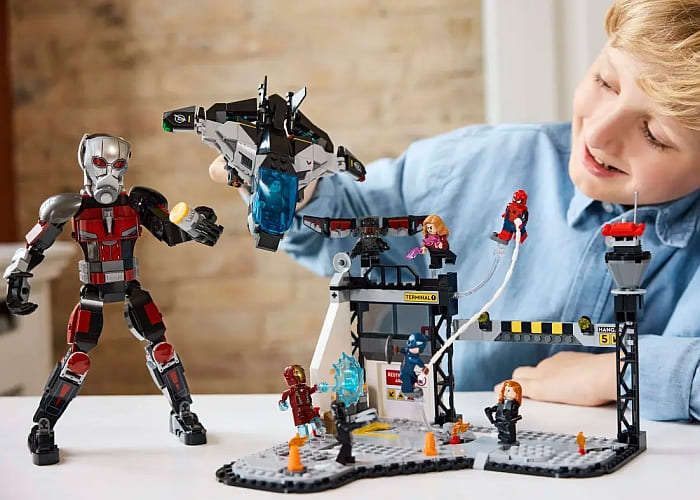
2025 LEGO MINECRAFT SETS AVAILABLE NOW: Minecraft continues to be popular with younger LEGO fans, and they get five new sets this year, available at the LEGO Minecraft section of the Online LEGO Shop.
- #21266 LEGO Minecraft Nether Lava Battle – Price: $9.99
- #21267 LEGO Minecraft Illager Desert Patrol – Price: $14.99
- #21268 LEGO Minecraft Baby Pig House – Price: $19.99
- #21269 LEGO Minecraft Armadillo Mine Expedition – Price: $29.99
- #21270 LEGO Minecraft Mooshroom House – Price: $49.99
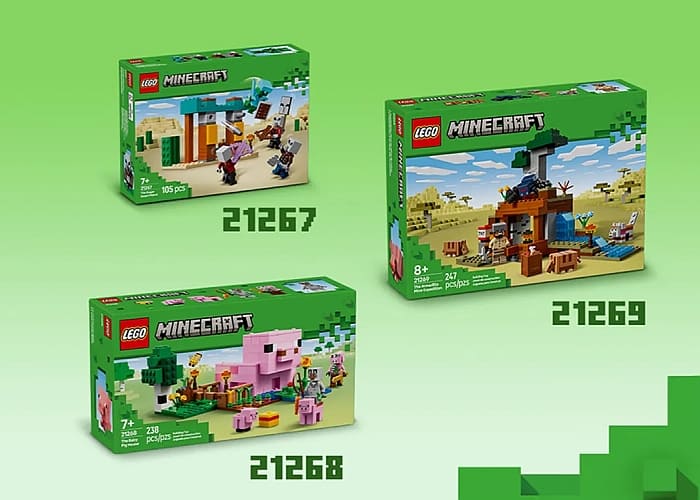
2025 LEGO MINIFIGURES AVAILABLE NOW: As usual, there is one surprise minifig in each box and a total of 12 characters to collect: Wolfpack Beastmaster, Pirate Quartermaster, Steampunk Inventor, Pterodactyl Costume Fan, Bogeyman, Jetpack Racer, Cat Lover, Longboarder, Astronomer Kid, Cupid, Hamster Costume Fan, and Plush Toy Collector. Available at the LEGO minifigs section of the Online LEGO Shop.
- #66795 LEGO Minifigures Series 27 Six-Pack – Price: $29.94
- #71048 LEGO Minifigures Series 27 – Price: $4.99
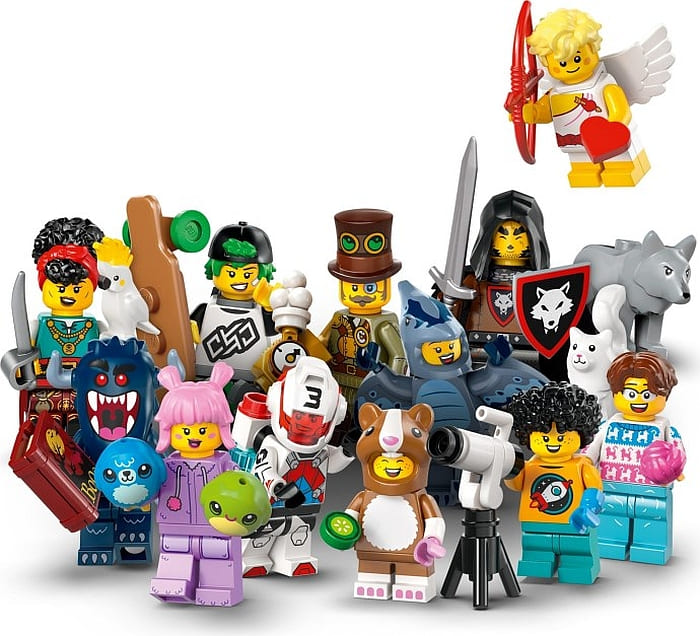
2025 LEGO MONKIE KID SETS AVAILABLE NOW: Only two new sets this time around, but they look pretty awesome! Available at the LEGO Monkie Kid section of the Online LEGO Shop.
- #80065 LEGO Monkie Kid Erlang’s Celestial Mech – Price: $89.99
- #80066 LEGO Monkie Kid Mythical Creature Qilin – Price: $69.99
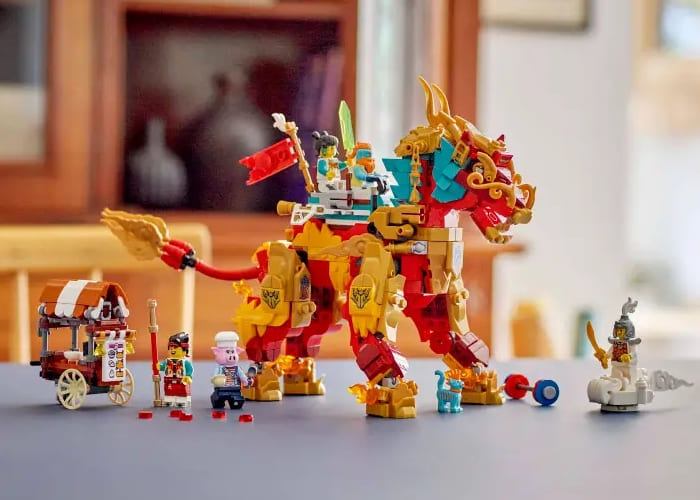
2025 LEGO NINJAGO SETS AVAILABLE NOW: This is another huge wave for January, featuring dragons, mechs, and more, along with our favorite characters. Available at the LEGO Ninjago section of the Online LEGO Shop.
- #71823 LEGO Ninjago Kai’s Dragon Spinjitzu Spinner – Price: $9.99
- #71824 LEGO Ninjago Sora’s Dragon Spinjitzu Spinner – Price: $9.99
- #71826 LEGO Ninjago Dragon Spinjitzu Battle Pack – Price: $19.99
- #71827 LEGO Ninjago Zane’s Battle Suit Mech – Price: $19.99
- #71828 LEGO Ninjago Lloyd’s Pull-Back Race Car – Price: $29.99
- #71829 LEGO Ninjago Lloyd’s Green Forest Dragon – Price: $19.99
- #71830 LEGO Ninjago Kai’s Mech Storm Rider – Price: $49.99
- #71831 LEGO Ninjago Ninja Spinjitzu Temple – Price: $39.99
- #71833 LEGO Ninjago Ras and Arin’s Super Storm Jet – Price: $49.99
- #71834 LEGO Ninjago Zane’s Ultra Combiner Mech – Price: $99.99
- #71841 LEGO Ninjago Dragonian Storm Village – Price: $39.99
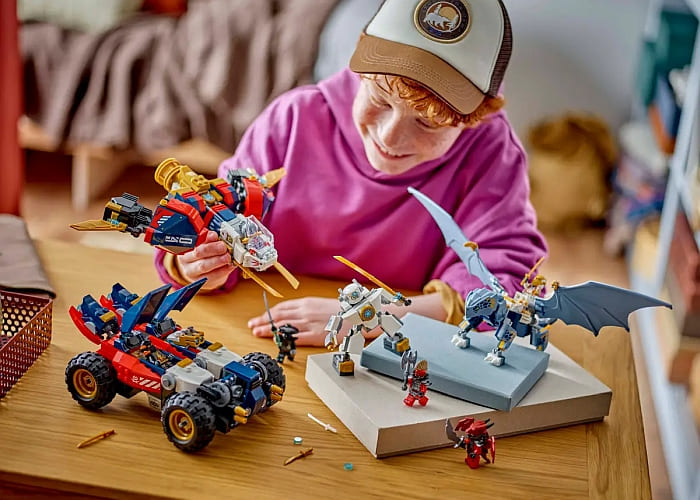
2025 LEGO SEASONAL SETS AVAILABLE NOW: The Chinese New Year sets are intriguing this year, with a working shadow theater and beautiful printed pieces! Available at the seasonal items section of the Online LEGO Shop.
- #40813 LEGO Lucky Cat – Price: $29.99
- #40821 LEGO Love Bears – Price: $14.99
- #80116 LEGO Chinese New Year Trotting Lantern – Price: $129.99
- #80117 LEGO Chinese New Year Good Fortune – Price: $89.99
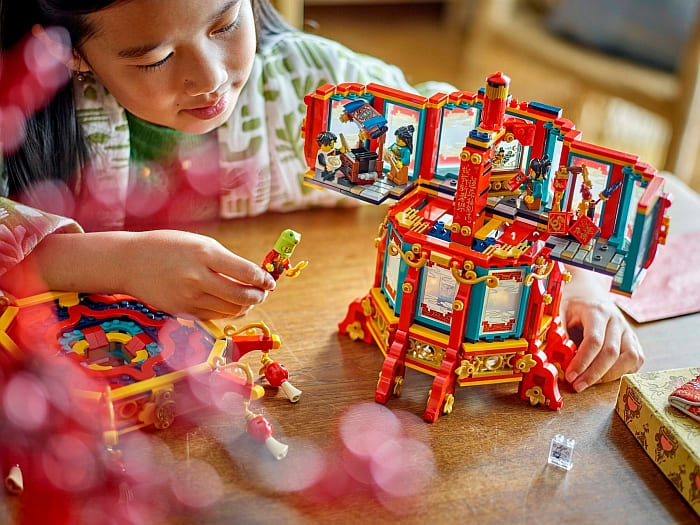
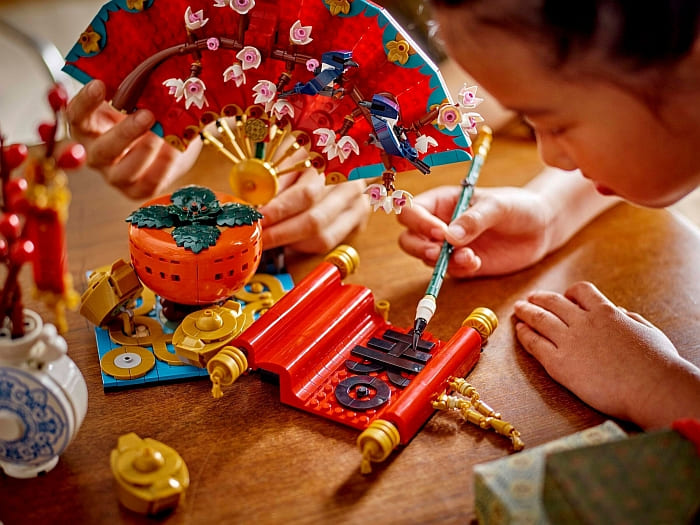
2025 LEGO SONIC THE HEDGEHOG SETS AVAILABLE NOW: Three more cute sets with cute characters, available at the LEGO Sonic the Hedgehog section of the Online LEGO Shop.
- #77001 LEGO Sonic’s Campfire Clash – Price: $19.99
- #77002 LEGO Sonic Cyclone vs. Metal Sonic – Price: $29.99
- #77003 LEGO Sonic Super Shadow vs. Biolizard – Price: $44.99
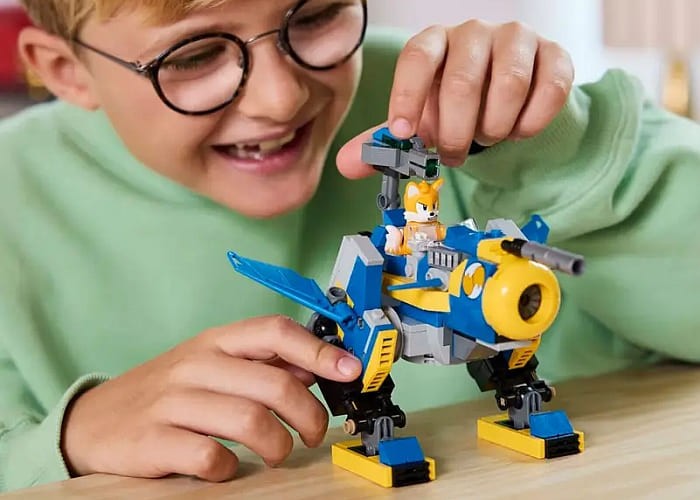
2025 LEGO STAR WARS SETS AVAILABLE NOW: LEGO Star Wars fans are getting two more midi-scale starships, two Mandalorian sets, and more! Available at the LEGO Star Wars section of the Online LEGO Shop.
- #75401 LEGO Star Wars Ahsoka’s Jedi Interceptor – Price: $44.99
- #75402 LEGO Star Wars ARC-170 Starfighter – Price: $69.99
- #75403 LEGO Star Wars Grogu with Hover Pram – Price: $99.99
- #75404 LEGO Star Wars Acclamator-class Assault Ship – Price: $49.99
- #75405 LEGO Star Wars Home One Starcruiser – Price: $69.99
- #75410 LEGO Star Wars Mando & Grogu’s N-1 Starfighter – Price: $29.99

2025 LEGO SUPER MARIO SETS AVAILABLE NOW: Take a look at those cute baby versions of the characters! Available at the LEGO Super Mario section of the Online LEGO Shop.
- #72031 LEGO Super Mario Yoshi Bike – Price: $14.99
- #72032 LEGO Super Mario Standard Kart – Price: $19.99
- #72033 LEGO Super Mario Donkey Kong & DK Jumbo – Price: $34.99
- #72034 LEGO Super Mario Baby Mario vs. Baby Luigi – Price: $29.99
- #72035 LEGO Super Mario Toad’s Garage – Price: $39.99
- #72036 LEGO Super Mario Baby Peach & Grand Prix Set – Price: $79.99
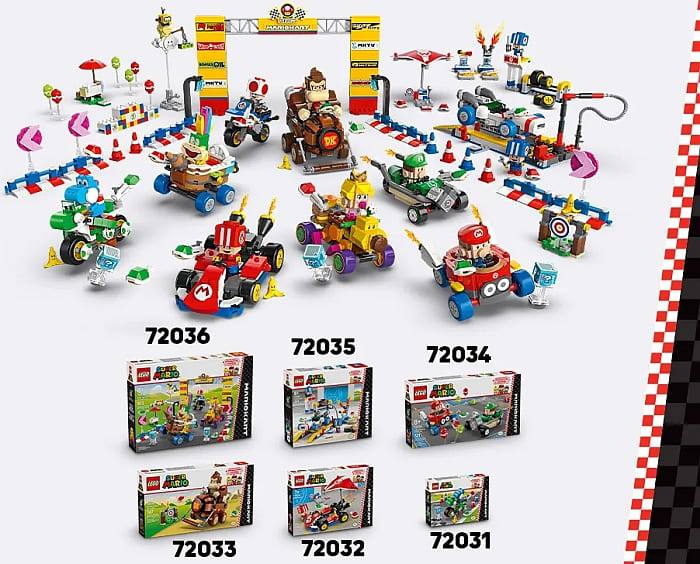
2025 LEGO TECHNIC SETS AVAILABLE NOW: A good mix of sets for LEGO Technic fans in every price range at the LEGO Technic section of the Online LEGO Shop.
- #42197 LEGO Technic Backhoe Loader – Price: $12.99
- #42198 LEGO Technic Bush Plane – Price: $26.99
- #42199 LEGO Technic Monster Jam DIGatron Pull-Back – Price: $26.99
- #42200 LEGO Monster Jam ThunderROARus Pull-Back – Price: $26.99
- #42201 LEGO Technic Deep-Sea Research Submarine – Price: $36.99
- #42202 LEGO Technic Ducati Panigale V4 S – Price: $199.99

I hope this list will help you select the sets you would like to get this year. Feel free to share and discuss your favorites in the comment section below!
And you might also like to check out the following related posts:
